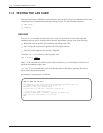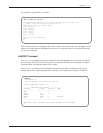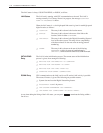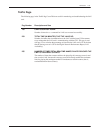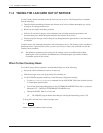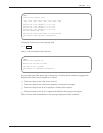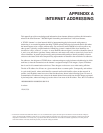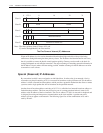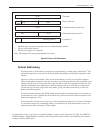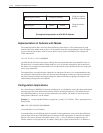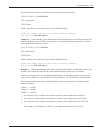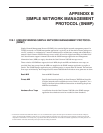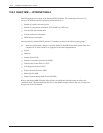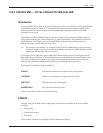
11A-2
Installation and Maintenance
V
olume
Octel Overture 200/300 Serenade 3.0
PB60014–01
Class A
0 1234 8 16 24 31
0 netid hostid
Class B 1 0 netid hostid
Class C 1 1 0 netid hostid
Class D 1 1 1 0 multicast address
Class E 1 1 1 1 0 reserved for future use
Note: The three primary forms (Classes A, B, and
C) can be distinguished by the first two bits.
The
Five Forms of Internet (IP) Addresses
Given
an IP address, its class can be determined from the three high-order bits, with two bits being
suf
ficient to distinguish among the three primary classes. The IP address has been defined in such a way
that it is possible to extract the hostid or netid portions quickly
. Gateways use the netid as the basis for
routing and depend on such ef
ficient extraction. The major advantage of encoding network information in
the IP address is that it makes ef
ficient routing possible. Another advantage is that IP addresses can refer
to networks as well as hosts.
Special
(Reserved) IP Addresses
By
convention, hostid 0 is never assigned to an individual host. It refers to the given network. Also by
convention, any hostid consisting of all 1s is reserved for broadcast on the given network. This broadcast
address is called a directed broadcast address, which provides a powerful mechanism that allows a remote
system to send a single packet that will be broadcast on the specified network.
Another form of broadcast address consisting of all 32 1s is called the local network broadcast address or
limited broadcast address. This form may be used as part of a startup procedure before it learns its IP
address or the IP address of the local network. The class A address 127.0.0.0 is reserved for loopback and
is designed for testing and interprocess communication on the local machine. A packet sent to this
address will never appear on the network. The following figure lists all the combinations of 0s and 1s
used by IP itself.



